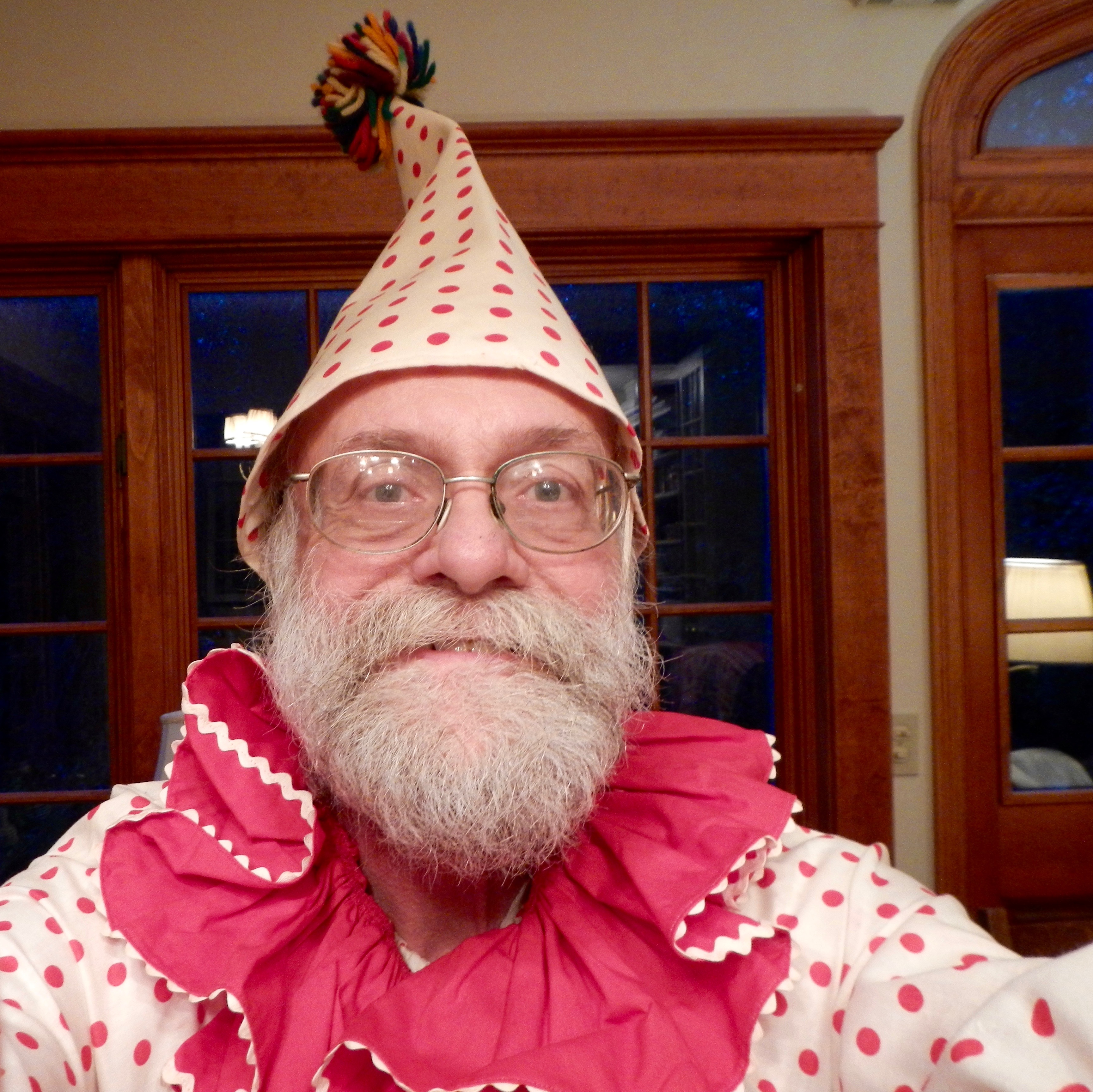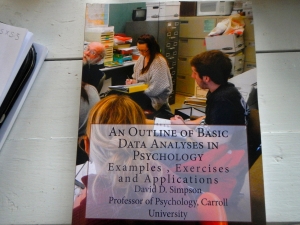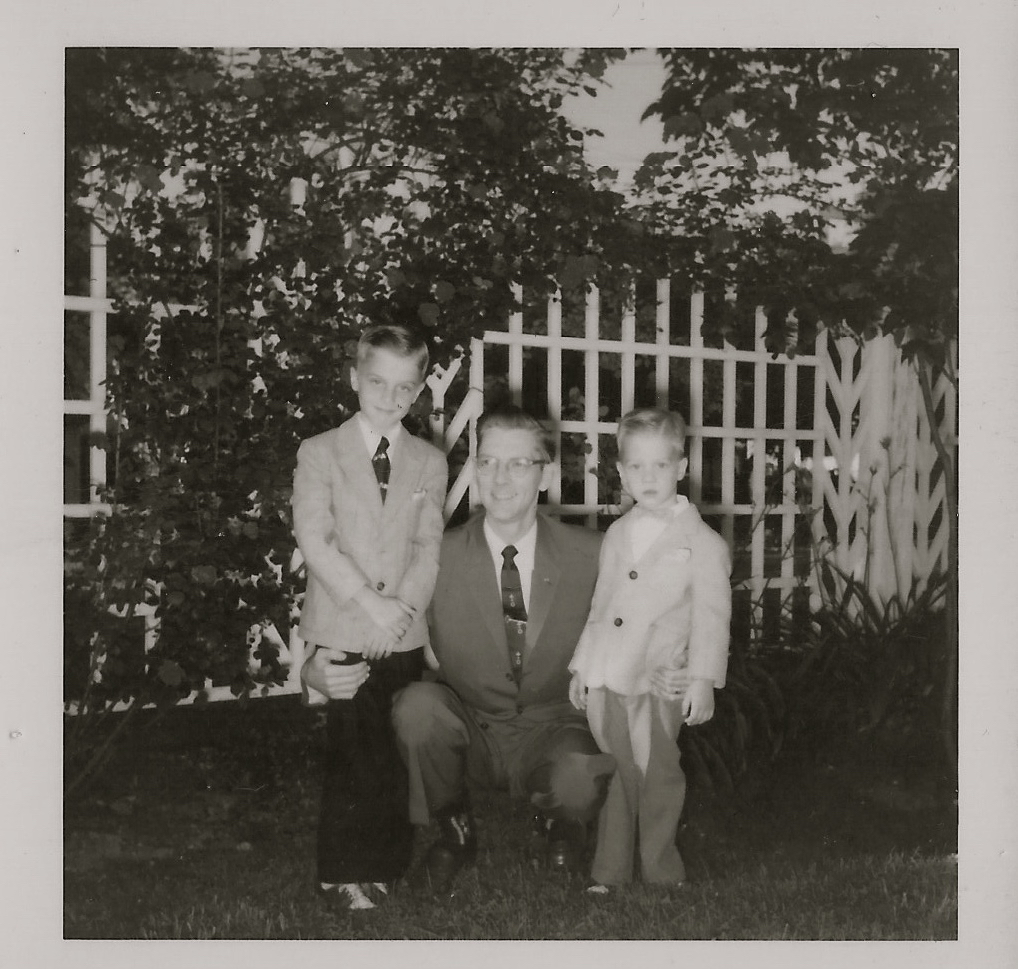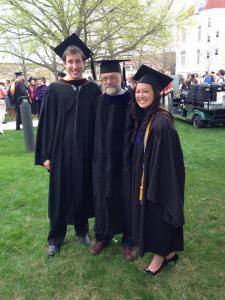
Just finished reading an eclectic, creative book from the Bloombury Literary Studies “Object Lessons” series by colleague John Garrison about Glass. I always enjoy reading things written by individuals who write better than I, see things which I don’t, and who alter my myopic perspective.
John’s “object lesson” for some reason triggered my thinking again about (over) use of platitudes in higher education such as “transparency,” “engagement”, “empowerment,” and “moving forward.” I have ranted about this before in the context of my perceptions about over zealous “branding.” Maybe my hypersensitivity (?) to these issues is caused by the joy of knowing people like John and poet BJ Best who remind me of the beauty of language. Maybe I just am in need of the forthcoming Thanksgiving family celebration.
Tag: Higher Education
More Resources for Better Understanding Your Academic Institution of Higher Education
Subsequent to hearing remarks by Carroll University President Doug Hastad about “Changes at Carroll”, attendees heard a presentation “The end of the ‘gilded age’ in higher education” by Kevin Crockett (President of Ruffalo Noel Levit’z enrollment management division) about changes in post secondary enrollment trends. The August 27, 2015 Waukesha Freeman article is available online. In an earlier post (found here) I offered ten resources that may help an individual better (or put into context) the health of his/her academic institution. I actually enjoyed the consultant’s quality data-filled 69-slide PowerPoint presentation (though several of my colleagues’ reactions reminded me of the infamous “Death by Powerpoint” and “PowerPoint is Evil” internet compositions.
- CollegeScoreCard (click on link and try it) wonderfully introduces an important trend toward TRUE TRANSPARENCY in data sharing and a very useful interactive data base for comparing schools.
- the UW Accountability Dashboard similarly exemplifies this healthy trend.
- College Results Online is a third such gem.
- Colleague John Garrison just alerted me to this nugget which like glass, about which John’s new book provides a fascinating history, may enhance transparency.
…and here is a link to the U.S. Department of Education’s data base “trove” that drives the data base. Let all of us users use it wisely.
Still Looking for ways to Improve My Courses (Pt. 2 of 2)
As I wrote about earlier , I’m looking for ways to improve my course Psychology 303, Experimental Social Psychology. My first such course, experienced while I was an undergraduate at Oberlin, was life-changing for me as I discovered that the discipline of psychology could scientifically study issues such as prejudice, attitude change, interpersonal attraction, and aggression. I’ve had several former students indicate that they have been very favorably impacted in similar fashion. I recently read a well-written blog by a Harvard undergraduate who listed what he felt were 20 best lessons from social psychology.
- I’ve been contemplating incorporating into my course a writing project that would culminate in something like his blog piece. I also am in the process of reviewing Jane Hart’s list of Top 100 Learning Tools to identify any that I want to bring into the course as research tools.
- I am especially interested in integrating into the course opportunities for cross-cultural /international communication.
- I’d be very interested in hearing from formed students how they have USED what they learned in experimental social psychology.
I welcome your input and ideas.
Still Looking for Ways to Improve Courses After 36 Years of Teaching (Pt.1 of 2)

I’m sitting on the porch attempting to complete the bulk of my Fall semester Carroll University course preparation before intentionally disconnecting from the Internet and enjoying five days of pure vacation in northern Michigan a week from tomorrow. This year I shall be teaching two sections of Psychology 205 (Statistics and Experimental Design) and one section of Psychology 303 (Experimental Social Psychology).
Tonight I am focusing on the Statistics and Experimental Design course—-a course that is particularly meaningful to me. For the past 20 years I have used a traditional textbook enhanced by my handouts. Students also have weekly labs to gain hands-on experience using SPSS (The Statistical Package for the Social Sciences). I’ve been very pleased by evidence that students learn, and I have received consistent positive evaluations across the years about the course both at the course’s completion and from graduates. But, there is always room for improvement—especially improvement attempts informed by thoughtful reflection from former students. So help me out. Are the two ideas below worth pursuing?
Across the years I have repeated heard from students how much they valued handouts I have distributed. These have essentially been a succinct outline of my notes (though I must confess that I haven’t used notes in 15 years!). The handouts are replete with a congery of Carroll-specific data and data collection exercises.
I have been troubled by the high cost to students of textbooks and bothered by what I see as unnecessary inclusions in textbooks (e.g. color, study guides, constant revisions, and electronic ancillaries of dubious didactic value) which drive up costs. Therefore, I’ve been recently exploring a number of self-publishing mechanisms (especially Lulu.com and ibooks author). One of the best resources about self-publishing I have come across is Rick Smith’s (self-published!) CreateSpace and Kindle Self-Publishing Masterclass (2014 edition). I found it very useful and useable.
I’ve recently carefully examined Amazon’s CreateSpace.com. I have been very impressed by its ease of use, pricing structure, and quality of physical book production. I am holding in my hand tonight a hard-copy proof of a very physically attractive book —my book—with a glossy cover which I created using Create Space’s Cover Creator software. If I proceed, the book can be printed on demand and/or, if I choose, it can be converted relatively effortlessly to Kindle format (This i have not yet tried). I can pretty much decide the cost to readers (I’ve toyed with the idea of it being free).
- Idea 1: I am tempted to give students the opportunity to buy a copy and to help me improve the book by their adding their own data collection examples. Alternatively, I hold off distribution until 2nd semester when I before which time I add information to the book (perhaps with some student/former student collaborators).
- Idea 2: I am also considering building into the course this semester formal instruction in using Survey Monkey software now that I have a Carroll account in addition to my Schneider Consulting account. I envision in my last few years’ teaching creating a Carroll Student Statistical Consulting service and this would be one of the tools the use.
Curious David Redux: What evidence is there that collaborative, engaging, Web tools indeed enhance learning— or Promote or Maintain Brain Health?
As I continue my transition to WordPress.org (and apply Margareta Magnusson’s ideas articulated in The Gentle Art of Swedish Death Cleaning to blogs I have written and photographs I have taken), I shall be revisiting some earlier pieces I have written during the last 15 years or so. I’ll title those pieces Curious David Redux.

[The photo above is of me, Dad, and younger brother Bruce in Grandma Stover’s back yard. I wonder where sister Connie was? Perhaps with Mom.]
The thought piece below first published on September 2, 2008 is actually a slightly revised blog piece I wrote in May of 2004 under the name “Curious David” when I was a community educational blogger for the Milwaukee Journal Sentinel. I was attempting to think through the poential of Internet Learning Tools. Today in 2018 I now am thinking through which of these might lend themselves to maintaining or promoting brain health.
I’m nervous and excited. Time to take off my invisibility cloak. Tomorrow (Tuesday, September 2, 2008 at 8:00 a.m.) I meet in person for the first time with my 20 first-year students. What an immense responsibility to be their first professor!
We’re going to explore “21rst century” learning tools such as blogs, wikis, podcasts, social networks, virtual worlds, and YouTube. The idea for this course emerged from my experiences writing this “Curious David” blog column. Last year’s opportunity to write for “JSonline” was transformative for me as I learned from elementary and secondary school teachers, high school students, virtual school advocates, retired faculty and readers about innovations, challenges and successes they faced promoting learning.
In this first-year seminar we shall focus on some of the 25 free learning tools described by educator Jane Hart. [Here is an updated list I would draw upon were I to teach this course again.] As we examine these learning tools we hope to answer questions such as these:
To what degree can these web tools truly enhance student learning?
To what degree are they just “cool” tools?
Could they be used to develop critical thinking?
Do they improve or degrade communication skills?
Might they be applied to fostering cross-cultural or international understanding?
Might they strengthen or weaken writing skills?
What are their weaknesses or dangers?
Should they complement or replace 20th century learning skills/tools?
How can one evaluate their effectiveness?
[It seems to me it should be possible to produce an evidence-based paper like this to address the questions above.]
My intent is to assist students in the transition from high school to college—and to investigate Web 2.0 learning tools which might be useful across classes and in the workplace. I want to involve them in educational experiences that will develop and enhance abilities in reading, writing, reflecting, presenting, thinking, and producing. Writing exercises will include short in-class and out-of-class reaction papers, journals, blogs/wikis, and exams. Presentations will be both formal and informal; individual and in small groups. Collaboration will be both with fellow students and with me.
Still Curious,
David
Post Commencement
Commencement Is history. Academic life takes on a different rhythm. End of semester revisiting of goals. Planning for fall semester courses. Reflection, rejuvenation, redirection.
One of the first academic professional development efforts I’ll engage in this summer is in reworking my Experimental Social Psychology course, PSY303. I need to somehow incorporate into it lessons learned from Diederik Stapel.
I also want to transform it into a major introduction to international/global applications. Any suggestions from readers of this blog would be most welcome.
Dear 2014 Carroll University Graduate…
 My thoughts may be even fuzzier this Saturday morning as I sit here in my office—a little over 24 hours before your Commencement Day. I have just returned from a three hour meeting in my role of Faculty Observer at a Board of Trustees Meeting, and I was most impressed by the poise, courage, compassion, and intelligence of the remarks made by your Student Senate President. Now is a good time to gather together some last thoughts about and for you. Tomorrow will be a joyful and tearful day as relationships change. Because of my
My thoughts may be even fuzzier this Saturday morning as I sit here in my office—a little over 24 hours before your Commencement Day. I have just returned from a three hour meeting in my role of Faculty Observer at a Board of Trustees Meeting, and I was most impressed by the poise, courage, compassion, and intelligence of the remarks made by your Student Senate President. Now is a good time to gather together some last thoughts about and for you. Tomorrow will be a joyful and tearful day as relationships change. Because of my age seniority good looks length of time at Carroll and rank of Full Professor, I march at the front of the line both at Baccalaurete (behind Dean Byler) and Commencement (following Faculty Marshall Pamela Pinahs-Schultz). That gives me an ideal seating position for seeing and hearing those of you in choir, but forces me to be on my best behavior (awake, disconnected from my Ipad, resisting wearing my Brewers’ or Carroll College hats). For those of you I have met, I have done my best to teach you well but I am only human. Every student I teach is different, special, and teaches me. You have enriched my life and I welcome the opportunity as you become alumni to continue and perhaps to even expand upon our relationships. Thanks for the lessons. Many people (family, staff, faculty, administrators, and trustees) have worked very hard, in addition to you, to try and provide you with the best education that Carroll can provide both within and outside of the classroom. I often think that we ought to set aside a time for recognizing those unsung “guardian angels” who have done their best to make Carroll a caring community and a better place. As time and circumstances allow join them in giving back (without expectation of receiving “conovocation points”) your time, wisdom, networking resources, prospective student recommendations, and examples of skills or values developed here at Carroll that serve you well. Give Carroll its due credit when it has earned it, but also offer constructive criticism when the institution has failed to meet your expectations for it. Seek out opportunities to do “a” right thing. Use your mind to think carefully and critically but don’t forget that there are indeed many times when it is appropriate to follow one’s heart. I envy your youth and the many opportunities that lie ahead to share your talents and to make the world a better place. Stay in touch. Oh, yes… Here is a final exam. With many fond memories, David Simpson, Professor of Psychology
What ELSE a professor does: On Being a Person of “Letters”
 What does a professor DO? My answer to this question changes as a function of when you ask me—at different times of the academic year and developmentally at different times in my professional career. I began to address this question in my first blog for the Milwaukee Journal Sentinel in October of 2007 when I was trying to explain to my father that a professor does more than sit in his office and read books (what a heavenly thought though). At that time I had the pleasure of being one of their online educational community columnists for a year.
What does a professor DO? My answer to this question changes as a function of when you ask me—at different times of the academic year and developmentally at different times in my professional career. I began to address this question in my first blog for the Milwaukee Journal Sentinel in October of 2007 when I was trying to explain to my father that a professor does more than sit in his office and read books (what a heavenly thought though). At that time I had the pleasure of being one of their online educational community columnists for a year.
One of the major demands on my academic life over and above teaching six classes per year, serving on committees,engaging in scholarly activity, academic advising, and mundane organizational responsibilities is writing letters of recommendation—an important task which consumes increasing larger amounts of my time. Having been a faculty member at Carroll for more than thirty-five years, I have gotten to know and be known by an increasingly larger number of students, staff, faculty, and alumni. I receive an unusually large number of requests from former students who graduated a number of years ago and who now are changing life directions (I truly welcome hearing from you—not only when you need something from me:)). The venue of these requests has changed from being asked in person and (in advance) to materials being placed under my office door, email, social media, telephone calls, Face Book messages, email forms from graduate programs–and occasionally via owl! I must admit I like staying in touch with former students, and the ways I keep connected with them have multiplied with the of use of email and the increased use of social networking tools such as Face Book and Linkedin and David-in-Carroll-land.
There are temptations to streamline, to cut corners, become more efficient, achieve that elusive goal of an empty email box. I conservatively estimate that I was called upon to write 5-6 letters for at least 75 individuals this past year. Easy solutions which come to mind (some of which I have experimented with) include using a template or form letter, using a rating scale or check list, keeping the letter short, limiting the number of letters written per student, being very selective about for whom I write (—or just saying NO), limiting the amount of time written per letter, limiting the format to twitter restrictions of 140 characters, using a haiku format, and/or teaching students ways that they can make my letter-writing easier. Alas, I wish that I were able to follow my own advice!
There exists quite a literature of the art (how does one write convincing letter?) and science (how valid and reliable are they?) of writing letters of recommendations. One of my favorites that I return to time and again immortalizes some ambiguous phrasing I strive to avoid—but am often tempted to use.
Time to go to a meeting of the Board of Trustees in my capacity as a Faculty Oberver to the Board. This will probably be the last time I serve in this interesting capacity at Carroll. I’ve enjoyed getting to know and be known by these dedicated people.
Hope I can stay alert; it was quite late when we returned from the Brewers/ Yankees game at 1:00 a.m! Maybe I’ll plug into this song on my headphone.
Three Digital Tools in Need of My Sharpening
I’m in the process of revisiting several resources that have influenced my choice of online teaching tools. This post focuses on the book by Steve Johnson (2011)—a thoughtful and concise compendium of his thinking about today’s “tech-savvy” (high school age) learners and how to prepare them for their digital future. He systematically evaluates over 30 “etools” he judges to be useful for engendering collaboration, creation, and publication across the curriculum, and offers concrete suggestions for how to get started (and how to keep up) as an instructor. Among the many tools that he recommends that I have personally found especially useful for my teaching at the college/university level are the following:
- I have grown to like Animoto as a vehicle for creating and sharing video-like productions, despite its constraints of needing to use Adobe Flash and accepting only MP3 formatted music files. I have elected to have an educational account with them. Here is an example of how I have used it.
- WordPress is now my blogging tool of choice and the blogging tool that I teach to students. I myself move back and forth between WordPress.com (“David in Carroll Land”) and WordPres.org (“Curious David in Carroll Land”). The latter gives me far more creative freedom (e.g. the use of plugins) but at an additional cost (both financial and time I need to devote to its higher learning-curve). Here is an example of a WordPress.com blog piece in which my student research assistants shared “sand box” activities while they explored for me the value of some beta version software which showed promise to me of eventually being useful in the classroom. Here, on the other hand, is a recent blog piece co-written with my students using the WordPress.org blogging software (which I still am at an early stage of mastering). Without doubt, my best etool evaluators are my highly trained student assistants.
- Google Docs is becoming an increasingly important tool for me. Indeed, I would love to devote the time to create a Google Apps course for our students. Richard Bryne, an educator thought leader whom I follow on Twitter and whose contributions I benefit from, has created a wonderful comprehensive guide to this tool.
Presently my students are more facile with this learning tool than I!. We regularly use it as a means of collaborating and sharing documents —photos, videos, journal articles, rough drafts, spreadsheets. Just today one of my senior research seminar students shared with me, on Google Drive, a wonderful video she had made of her interviewing her twelve-year-old son about his experiences with a form of Asperger syndrome. Keri and I shortly shall be incorporating this video and her insights about parenting such a special child into a blog piece as a first step in assisting her in writing a book to share her knowledge.
Remembering Mother Earth: Reflections on Earth Day 2014.
1) Earth Day concerns should be unifying every day concerns .
2) We must do more than merely virtually explore the wonders of our precious planet.
3) Preserving, savoring, celebrating, protecting, and nurturing Mother Earth should be a super-ordinate, cross national,unifying effort of international concern.
4) We are all earthlings.
5) There is much to learn.
6) Mother Earth is fragile and the Pale Blue Dot is tiny in the cosmic scheme of things.
7) So much beauty must be shared, preserved, protected and passed on.




